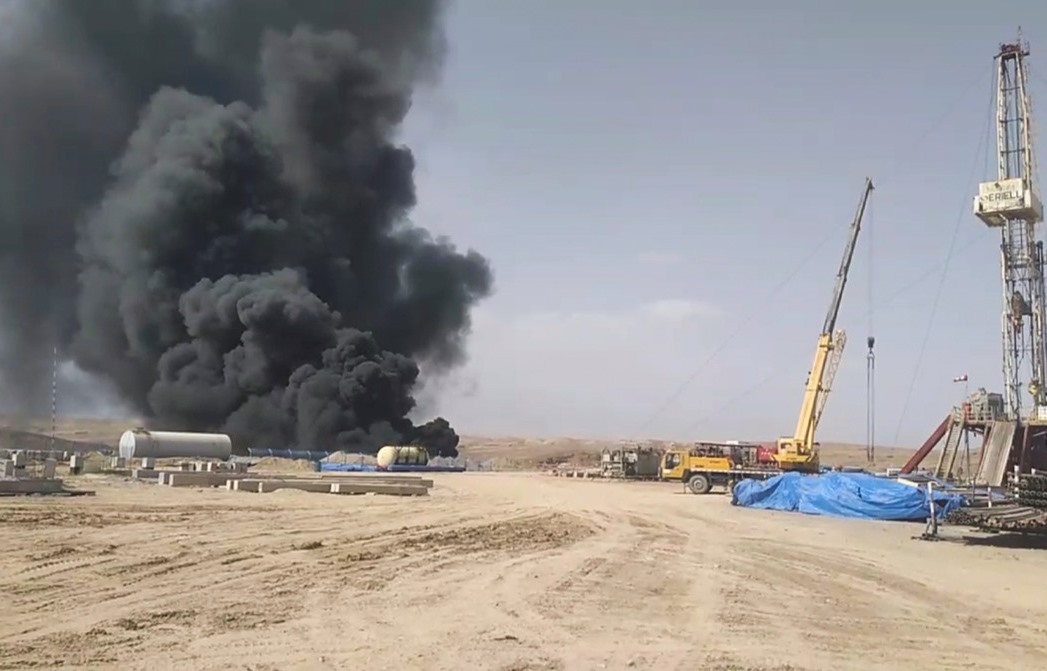Hydrogen Sulfide Leak Forces Evacuations in Uzbekistan’s Surkhandarya Region
Residents of several villages in the Baysun district of Uzbekistan’s Surkhandarya region were evacuated following a hydrogen sulfide gas leak, according to local media.
The Ministry of Emergency Situations in Uzbekistan reported that the incident occurred on September 1 at 3:17 p.m. during drilling at Well No. 604 in the “25 Years of Independence” gas field (M-25) located in Kulkamysh mahalla. The gas leak was attributed to a breach in the technological process.
Authorities took immediate action to ensure public safety, relocating people living near the affected area to secure locations. According to the Ministry, no injuries or fatalities have been reported. They emphasized that the situation is under control, urging the public to remain calm. Specialists and emergency teams were promptly dispatched to the site to manage the situation.
Images shared by government sources displayed smoke emanating from the drilling equipment, while videos circulating on social media showed firefighters working near the rig.
Surkhandarya Governor Ulugbek Kosimov, alongside other officials, visited the affected area to assess the situation. The press service of the regional governor’s office assured that the situation was being carefully monitored and urged citizens to avoid panic. Additionally, social media users were requested to refrain from sharing content that could incite public fear.
In accordance with protocols for safe operations in fields with high hydrogen sulfide concentrations, a contingency plan (PLA) is developed for each facility. This plan outlines evacuation routes, locations of personal protective equipment (PPE), and emergency contact lists in case of accidents involving the release of hydrogen sulfide.
Hydrogen sulfide, a highly toxic gas, can severely impact the nervous system and can paralyze the sense of smell, making it difficult for those exposed to detect the gas, which increases the risk of poisoning. The maximum allowable concentration of hydrogen sulfide in workplace air is 10 mg/m3, while in residential areas, it is significantly lower at 0.008 mg/m3.
The M-25 field, one of Uzbekistan’s largest undeveloped gas reserves, holds an estimated 150 billion cubic meters of natural gas, much of which contains high levels of hydrogen sulfide and carbon dioxide.
In 2017, Uzbekistan’s government entered into a production-sharing agreement with a consortium of international investors, including Gas Project Development Central Asia, Altmax Holding, and Uzneftegazdobycha, to explore and develop the “25 Years of Independence” gas field. The project also involves constructing a gas processing complex in Surkhandarya, with a total investment estimated at $5.8 billion.
Drilling operations are led by Eriell, with Enter Engineering responsible for the design, equipment supply, and construction of infrastructure. As of November 2023, the project has received $1.45 billion in investments, and significant progress has been made, with 20 wells drilled and 11 gas wells tested.
In addition to gas extraction, the gas processing plant (GPP) will feature a sulfur granulation unit to convert liquid sulfur into solid forms for either sale or storage. The facility is expected to produce 460,000 tons of sulfur annually.
The project documents emphasize that the high levels of hydrogen sulfide and carbon dioxide present in the gas can severely corrode steel pipelines, posing significant risks of leaks, environmental damage, and other hazardous consequences.
Hydrogen sulfide, classified as a Class 2 hazard due to its extreme toxicity, presents a serious threat to both human and animal life.
Image credit: gazeta.uz


